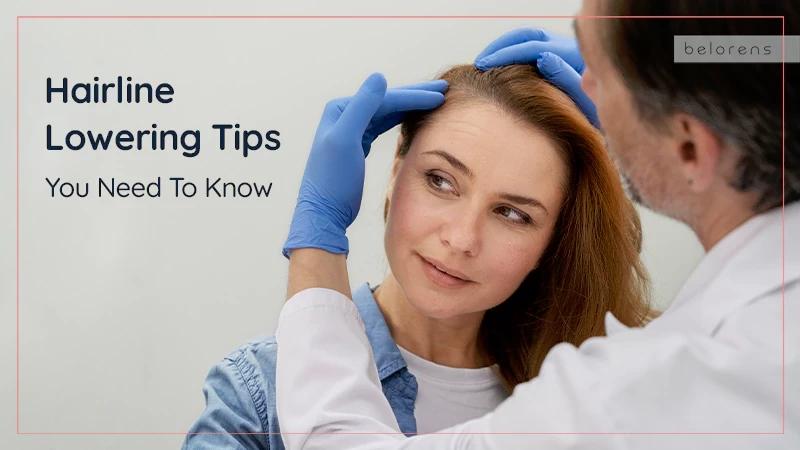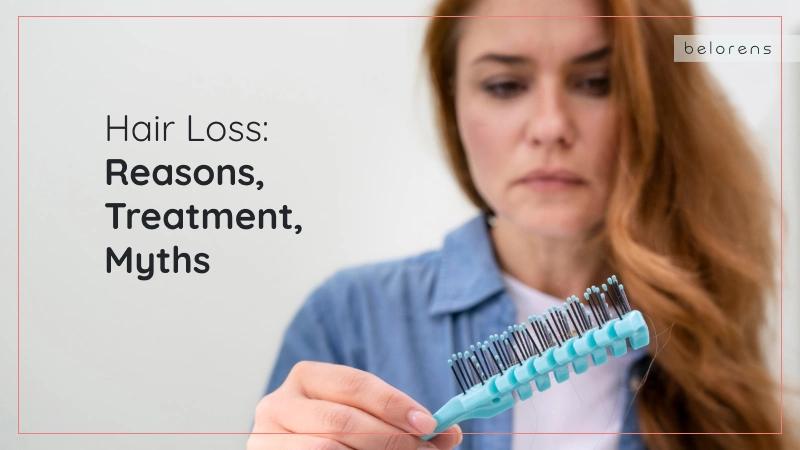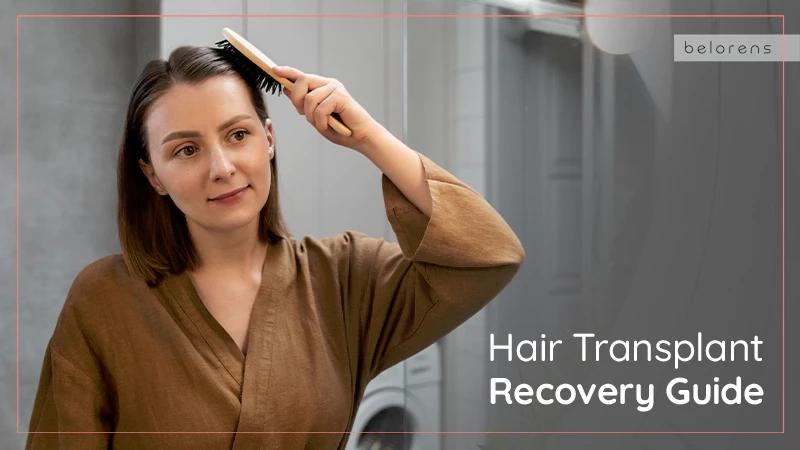Published on 13 Apr 2024 | Last updated on 25 May 2024
Types of Hair: Identify your Hair Type and Learn How to Take Proper Care of it!
- ByMedical Content Team
- Medically Reviewed byDr. Sabine Kulhanek
Fact checked
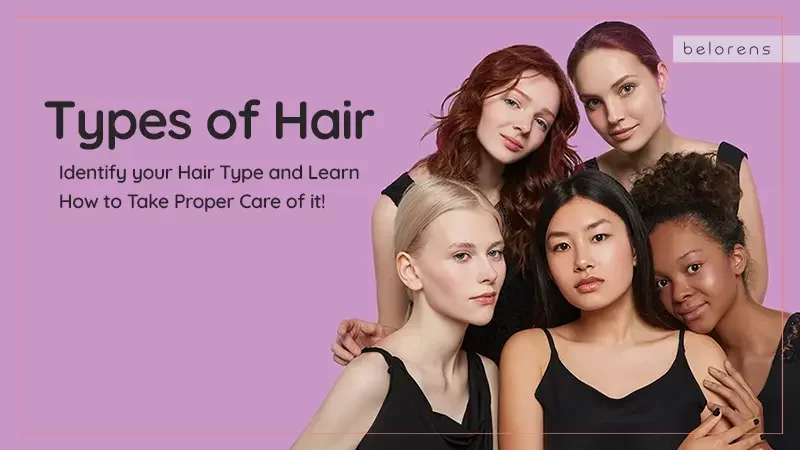
Understanding the different types of hair type is essential for its health and appearance. This article aims to guide you through the various hair types, how to identify yours, and the best practices for maintaining it. Whether you have straight, wavy, curly, or oily hair, each type has specific needs that, when addressed properly, can lead to healthier, more vibrant hair. We'll cover routine care tips, how to tackle common hair concerns and the importance of choosing the right products. Additionally, we'll touch on the role of scalp health and debunk some widespread hair care myths. Our goal is to provide straightforward, useful information that can help you develop a hair care routine that works best for your hair type, leading to improved hair health and overall satisfaction with your hair's appearance.
Do you happen to have problems with hair loss? Explore Belorens for tailored advice on managing your unique hair concerns and their solutions. Find your perfect match in treatments, view before and after photos, and connect with trusted professionals.
What is your Hair Type?
Understanding the hair texture types is crucial for its proper care and maintenance. Hair is categorized into 12 main types, ranging from the very straight (Type 1) to the most coiled (Type 4C). Each category is further divided into subtypes (A, B, C) based on the texture and curl pattern. This detailed classification helps you tailor your hair care routine to match your hair's specific needs, ensuring it remains healthy and vibrant. To aid in identifying your hair type, we've included an infographic in this article. This hair texture chart simplifies the process, allowing you to easily determine where your hair falls within the spectrum. Recognizing your hair type is the first step towards adopting the most effective care practices for different types of hair.
Also Read: How to Treat Hair Loss in Women
Different Types of Hair: Learning Their Characteristics, and Proper Care Methods

From the sleek strands of Type 1 to the tight coils of Type 4C, understanding these categories is key to unlocking the secrets of effective hair care. Each type and subtype possesses unique characteristics and requires specific approaches for maintenance, styling, and health. In the following sections, we break down each hair type into H3 headings, providing insights and tips tailored to the individual needs of your locks. Whether you're looking to enhance your natural texture, combat common hair issues, or simply learn more about your hair, this comprehensive guide serves as your roadmap to learning natural types of hair and embracing and caring for your tresses at their best.
Hair Type 1A: The Essence of Sleekness
The first entry in our list of types of hair is the 1A hair, which is the epitome of straight hair, characterized by its very sleek, shiny, and fine nature. This hair type is often envied for its glossy appearance and smooth texture but struggles with volume and can appear limp. It's the most oil-prone among all hair types due to the straight path sebum takes from the scalp down the hair shaft.
1A Hair Self-care Tips
The key to caring for 1A hair types of hair involves balancing cleanliness with maintaining its natural oils. Overwashing can lead to dryness, while infrequent washing can make it look greasy. Using a gentle, volumizing shampoo and lightweight conditioner can help maintain its health without weighing it down. Heat styling should be minimal to avoid damage, but if used, heat protectants are a must. Regular trims help keep ends healthy and prevent the hair from looking even flatter.
Ideal Products for 1A Hair
Volumizing shampoos and lightweight conditioners are ideal. Dry shampoo can be a lifesaver between washes, helping to absorb excess oil and add texture. Lightweight leave-in conditioners or hair serums can add shine without greasiness.
Hair Type 1B: Straight with a Touch of Volume
Type 1B hair is straight as well, but it has more body and volume compared to Type 1A. It may exhibit a slight bend or wave, especially towards the ends, making it versatile and easier to style. This hair type strikes a balance between sleek and voluminous, offering a bit more texture and the ability to hold curls or waves slightly better.
1B Hair Self-care Tips

To keep 1B types of hair looking its best, a balanced approach to moisture and volume is key. Washing with a volumizing shampoo followed by a light conditioner can help maintain its natural bounce. A lightweight mousse or volumizing spray can add a body without stiffness. Heat styling tools can be used to create waves or straighten any slight bends, but always use a heat protectant spray to shield the hair from damage.
Ideal Products for 1B Hair
Volumizing shampoos, lightweight conditioners, and styling products like mousse or light-hold hairspray. Heat protectant sprays are essential for those who use hot tools regularly.
Hair Type 1C: Straight with Character
1C types of hair are unique in the straight hair category because they boast a more coarse texture and may have a distinct wave or two. This hair type combines the sleekness of straight hair with the volume and texture more akin to wavy types. It's resilient and can handle styling well but may struggle with frizz and dryness due to its texture.
1C Hair Self-care Tips
Managing frizz and maintaining moisture without weighing the hair down are the main goals for 1C types of hair care. Using a smoothing shampoo and a hydrating conditioner can help tame frizz and add softness. A leave-in conditioner or light hair oil can provide additional moisture and make the hair more manageable. Limiting the use of heat styling tools and letting the hair air dry can also help maintain its natural texture while minimizing damage.
Ideal Products for 1C Hair
Smoothing or hydrating shampoos and conditioners, leave-in conditioners, light hair oils, and anti-frizz serums. Products that add moisture without heavy residues are ideal for keeping 1C types of hair looking their best.
Hair Type 2A: Soft, Tousled Waves
Type 2A hair is the lightest wavy hair type, characterized by its fine texture and subtle, tousled waves that add a hint of movement and body. These waves are most noticeable around the mid-lengths and ends of the hair, creating a soft, beachy look. Unlike straight hair, 2A types of hair wave can give a slight volume boost but still lie fairly close to the head, avoiding the puffiness or frizz often associated with curlier types.
2A Hair Self-care Tips
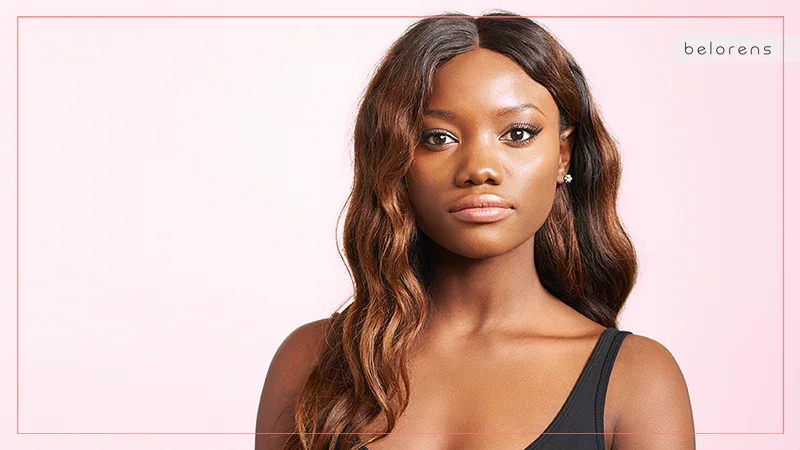
Maintaining the natural beauty of 2A types of hair involves a delicate balance of hydration and lightweight styling. Overwashing can lead to dryness, while heavy products can weigh down the waves, so it’s essential to find the right products that nurture without overwhelming. Regular trims are also crucial to prevent split ends and keep the waves looking fresh. Air drying is recommended to encourage the natural wave pattern, though a diffuser can be used on low heat to add volume without disrupting the wave structure.
Ideal Products for 2A Hair
As for hair type 2A products, look for volumizing shampoos and lightweight, hydrating conditioners that won’t weigh down your waves. A light mousse or sea salt spray can add body and definition when applied to damp hair. To refresh your waves between washes, consider using a dry shampoo at the roots for an extra lift. Avoid heavy oils and serums, opting instead for light leave-in conditioners or detangling sprays to keep your waves soft and manageable.
Hair Type 2B: Defined Waves
Type 2B hair texture features more pronounced and defined waves compared to 2A, with the wave pattern starting closer to the root. This hair type tends to have a combination texture, with a tendency towards frizziness, especially in humid conditions. The waves of 2B types of hair form S shapes, both wide and well-defined, offering more volume and body throughout the hair compared to the gentle waves of 2A.
2B Hair Self-care Tips
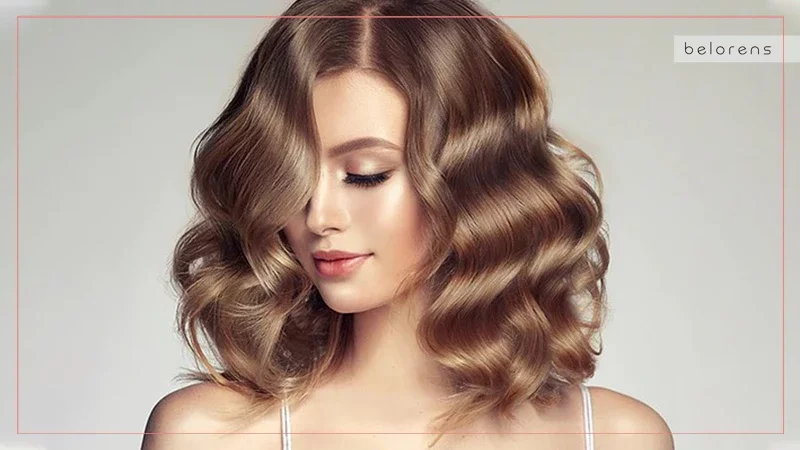
To manage the frizz and maintain the definition of 2B types of hair waves, hydration is key. Use a sulfate-free shampoo to cleanse without stripping natural oils and a rich conditioner to moisturize and detangle. Leave-in conditioners and curl-enhancing creams can help define waves and control frizz. Diffusing hair on a low heat setting can also enhance wave definition while minimizing frizz. Regular deep conditioning treatments will help keep 2B hair healthy and vibrant.
Ideal Products for 2B Hair
Sulfate-free hydrating shampoos and rich conditioners are ideal for 2B types of hair. Look for curl-enhancing creams or gels designed for wavy hair to define and separate waves without stiffness. Anti-frizz serums or natural oils (like argan or coconut oil) can be applied sparingly to the ends to tame flyaways and add shine. A microfiber towel or t-shirt can be used for drying to reduce frizz, and a wide-tooth comb should be used for detangling when wet.
Hair Type 2C: Thick, Wavy Hair
Type 2C hair is the most intense of the wavy hair types, characterized by its thick, defined waves and a tendency to frizz. The waves are tighter and start from the scalp, creating a more voluminous and textured look. This hair type bridges the gap between wavy and curly, featuring curls that might coil around themselves, especially in a humid environment. The texture can range from medium to coarse, requiring more moisture than finer wavy types.
2C Hair Self-care Tips
Managing 2C hair involves combating frizz while nurturing the hair’s natural volume and definition. Use a gentle, hydrating shampoo and a deep conditioner to moisturize and define the waves. A leave-in conditioner or curl cream can help control frizz and define the wave pattern. When drying, use a diffuser to encourage definition or air dry to minimize frizz. Hands-off styling is best to avoid disrupting the wave pattern and increasing frizz. Regular deep conditioning treatments and occasional hair masks will keep 2C types of hair waves looking their best.
Ideal Products for 2C Hair
Look for moisturizing shampoos and conditioners formulated for curly or wavy hair that can provide the extra hydration 2C types of hair need. Curl creams, defining gels, and anti-frizz serums are essential for styling and managing frizz. For an extra moisture boost, incorporate hair masks or oil treatments into your routine. Use a wide-tooth comb for detangling to minimize breakage and preserve the waves’ natural texture.
Struggling with thinning hair or receding hairline? Get the best solutions for thinning hair and receding hairline!
Hair Type 3A: Loose, Shiny Curls
Type 3A hair features large, loose curls that tend to be shiny and well-defined, often resembling the circumference of a piece of sidewalk chalk. This hair type strikes a balance between volume and manageability, with curls that are typically springy and can easily be styled or enhanced. The natural luster of 3A types of hair curls is a standout feature, but they can be prone to dryness, requiring consistent moisture to maintain their shape and shine.
3A Hair Self-care Tips
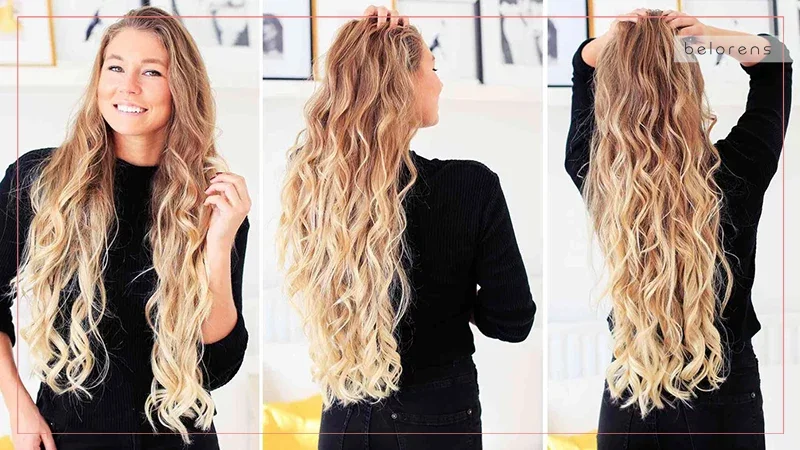
To keep 3A types of hair curls looking at their best, it’s important to focus on hydration and gentle handling. Avoid harsh sulfates in shampoos that can strip moisture and opt for creamier, hydrating cleansers. Use a wide-tooth comb or your fingers to detangle when wet to minimize breakage. Deep conditioning treatments and regular hydration can help maintain the health and elasticity of the curls. Styling should be minimal to enhance the natural curl pattern without causing damage; diffusing with low heat can add volume and define curls without creating frizz.
Ideal Products for 3A Hair
Hydrating shampoos and conditioners, deep conditioners, and leave-in conditioners are essential for 3A types of hair curls. Curl-enhancing creams or gels can help define and hold curls without crunchiness. Lightweight oils (like argan or jojoba) can add shine and reduce frizz when applied sparingly to the ends. A silk or satin pillowcase can also help reduce frizz and breakage overnight.
Hair Type 3B: Tighter Curls
Type 3B hair consists of medium to tight curls with a noticeable volume and density. The curls are more compact and can range from bouncy ringlets to tight corkscrews, often with a circumference similar to a marker pen. This hair type can be prone to dryness and requires significant moisture to retain its shape and reduce frizz. The texture can vary from fine to coarse, making versatility one of its strengths, yet also presenting unique care challenges.
3B Hair Self-care Tips
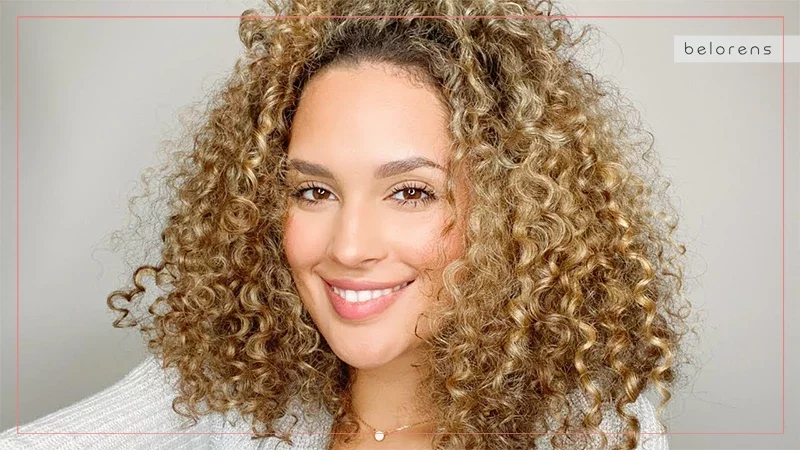
Moisture is key for 3B types of hair to thrive. Incorporate rich, nourishing products into your routine, including butter and creams that seal in hydration. Detangle gently with a wide-tooth comb or fingers to avoid disrupting the curl pattern and causing breakage. Protective styles can help retain moisture and length, reducing manipulation and the potential for damage. Avoid heat styling when possible, and if using, always apply a heat protectant.
Ideal Products for 3B Hair
Look for creamy, moisturizing shampoos and conditioners that cater to curly hair. Deep conditioning treatments and hair masks should be used regularly to infuse 3B types of hair with the necessary moisture. Curl-defining creams, butter, and gels will help enhance the natural curl pattern while providing hold. For sealing moisture, consider heavier oils like castor or shea butter, especially on the ends.
Hair Type 3C: Coily Curls
Type 3C hair is the curliest of category C hair textures. It is comprised of tightly coiled curls that are densely packed together, offering the most volume and texture within the Type 3 category. The curls are fine in texture, resembling corkscrews, and often have a diameter smaller than a pencil. This hair type is highly susceptible to dryness, making moisture retention a top priority. The tight curls of 3C types of hair can be both a blessing and a challenge, as they offer a beautiful, voluminous look but require careful management to maintain definition and health.
3C Hair Self-care Tips
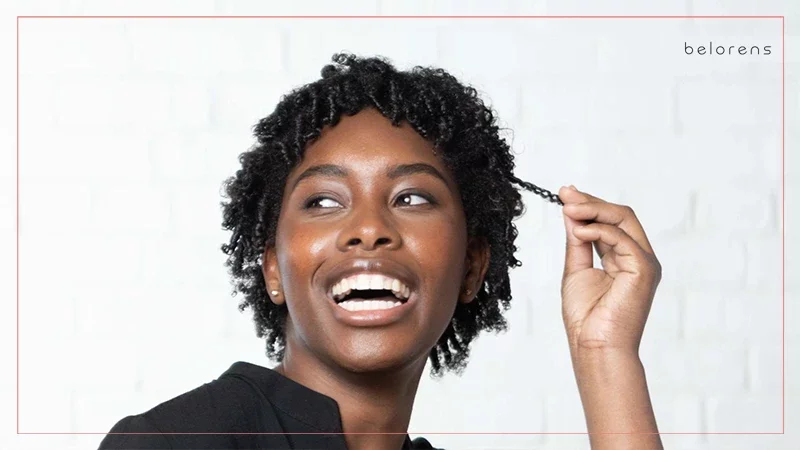
Regular deep conditioning is crucial for 3C types of hair curls to keep them hydrated and elastic. Use leave-in conditioners and stylers that enhance curl definition and provide moisture. Gentle detangling is necessary to prevent breakage, ideally when the hair is wet and conditioned. Limit the use of heat and harsh chemicals to avoid damaging the delicate curl structure. Embrace protective styling to minimize manipulation and protect the ends from damage.
Ideal Products for 3C Hair
Sulfate-free, hydrating cleansers and conditioners are ideal for 3C types of hair, as they clean without stripping natural oils. Deep conditioners and leave-in conditioners that offer intense moisture are essential. Styling products like curl creams, gels, and custards can define and enhance the natural curl pattern. Lightweight oils or serums can add shine and reduce frizz without weighing down the curls. A silk or satin scarf or pillowcase can help maintain hairstyles and reduce overnight frizz.
Also Read: All You Need to Know About Skin Tone and Undertone
Hair Type 4A: Soft, Springy Coils
Type 4A hair is characterized by its tight, well-defined coils that appear springy and have a fine to medium texture. The coils are dense and closely packed, forming an "S" pattern when stretched. This hair type is known for its volume and shrinkage, which can be significant, often reducing the apparent length of the hair by up to 75%. Despite its robust appearance, 4A types of hair are quite delicate and prone to dryness, necessitating a regimen focused on moisture and gentle handling to maintain its health and definition.
4A Hair Self-care Tips
Maintaining 4A types of hair involves a dedicated regimen aimed at maximizing hydration and minimizing breakage. Weekly deep conditioning treatments with products rich in moisture and protein balance are crucial for strengthening the hair and enhancing its natural coil pattern. Detangle gently using a wide-tooth comb or fingers, starting from the ends and working up to the roots, to minimize breakage. Protective styles such as twists or braids can help retain length and reduce manipulation, while regular moisturizing with leave-in conditioners and sealants is key to keeping the coils defined and hydrated.
Ideal Products for 4A Hair
To care for 4A types of hair, use creamy, hydrating shampoos and conditioners specifically designed for coily or kinky hair types. Look for deep conditioners enriched with natural oils and butter (such as shea butter, coconut oil, or avocado oil) to provide intense moisture. Leave-in conditioners, curl defining creams, and hair butter are essential for daily moisture and definition. For sealing moisture, heavier oils like castor oil or creams can be effective, especially when applied to damp hair.
Hair Type 4B: Z-Shaped Coils
Type 4B hair has a less defined curl pattern and is characterized by its tight, z-shaped coils with a more cotton-like feel. The strands may bend in sharp angles rather than forming defined rings, creating a highly textured appearance with significant volume and shrinkage. This hair type is incredibly versatile but requires careful management to maintain moisture, as it can become dry and brittle if neglected. The density and coarseness of 4B types of hair provide a strong framework for various styles but also demand a regimen that prioritizes hydration and minimizes breakage.
4B Hair Self-care Tips
Hydration and gentle handling are the cornerstones of 4B types of hair care. Incorporate regular deep conditioning treatments to infuse moisture and elasticity into the hair. Moisturizing daily with water-based products followed by sealants can help maintain hydration levels. Detangle gently with a wide-tooth comb or fingers, and consider protective styling to reduce manipulation and retain length. Avoid harsh chemicals and excessive heat styling, which can compromise the hair's natural texture and health.
Ideal Products for 4B Hair
Sulfate-free shampoos, rich conditioners, and deep conditioning masks that are high in moisture are essential for 4B types of hair. Look for leave-in conditioners, curl creams, and hair butters that provide lasting hydration and support the hair's natural texture. For sealing in moisture, use heavier oils like castor oil or shea butter. A good quality satin bonnet or pillowcase can help reduce friction and moisture loss overnight.
Hair Type 4C: Tightly Coiled and Versatile
Type 4C hair is the most densely packed of the Type 4 category, with coils that are so tightly coiled they may not even display a defined curl pattern. This hair type exhibits the highest degree of shrinkage. Out of all the types of hair curls, these are the most dense and closely packed, often appearing much shorter than their actual length. 4C hair is incredibly versatile and can achieve a wide range of styles, from afros to braids and twists. However, it is also the most prone to dryness and breakage, requiring a regimen focused on moisture retention and protective styling to preserve its health and length.
4C Hair Self-care Tips
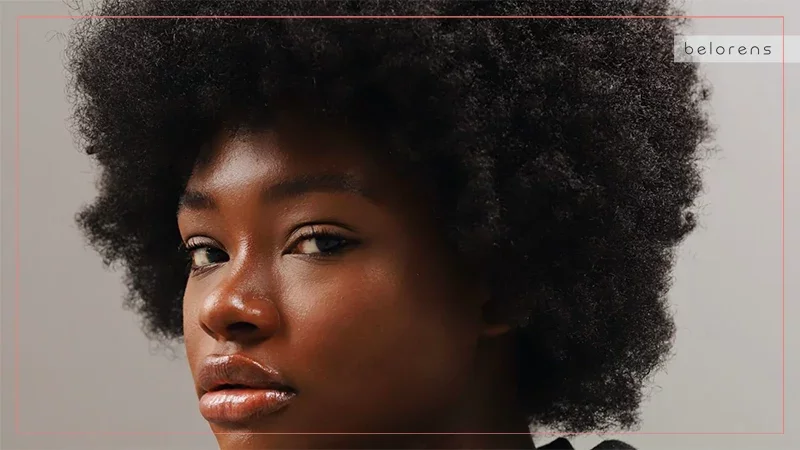
A moisture-rich routine is vital for 4C types of hair, involving regular deep conditioning and the use of leave-in conditioners to maintain hydration. Protective styles are highly beneficial, as they minimize manipulation and protect the ends from damage. Gentle detangling with a wide-tooth comb or fingers, preferably during the conditioning process, can help prevent breakage. Limit the use of heat and harsh chemicals, and instead embrace the natural texture of your hair with styles that require low manipulation.
Ideal Products for 4C Hair
Hydrating, sulfate-free shampoos and conditioners are a must, along with deep conditioners and hair masks formulated for extra dry hair. Leave-in conditioners, hair milk, and curl activator creams can provide daily moisture, while heavy butters and oils (such as shea butter, castor oil, or jojoba oil) are excellent for sealing in moisture. A satin or silk scarf or pillowcase can help reduce breakage and moisture loss overnight, keeping 4C types of hair protected.
Last Word: Belorens and your Hair Care
In conclusion, understanding the unique characteristics of different types of hair is foundational to adopting an appropriate care regimen that promotes health and vitality. Each hair type, from straight to coily, has its own set of needs that, when properly addressed, can enhance its natural beauty and manage common concerns. Beyond aesthetic preferences, recognizing the diversity in hair types underscores the importance of tailored hair care solutions that respect individual differences.
Belorens offers a valuable resource for exploring aesthetic concerns, including hair care, by providing personalized solutions based on a wide range of factors such as budget, invasiveness preference, and location. With access to Hair Transplant Before and After Photos, discussions, and connections to credible medical professionals, individuals are empowered to make informed decisions about their hair care and aesthetic needs. This holistic approach to hair care, supported by platforms like Belorens, reflects a broader understanding of beauty and wellness in today's diverse world.
Also Read: The Ultimate Guide to Making a Skincare Routine: Tips for Healthy Skin
FAQ
How often should I change my hair care products based on my hair type?
Discover when it's time to switch up your hair care arsenal to keep your locks thriving, factoring in seasonal changes and hair health.
Can diet and nutrition significantly affect the health of different types of hair?
Explore the connection between what you eat and the vitality of your hair, highlighting key nutrients for promoting hair growth and strength across various hair types.
What are the best practices for protecting my hair type from environmental damage?
Learn strategies to shield your hair from sun, pollution, and humidity, tailored to preserve the integrity of your specific hair type.
How can I identify signs of damage in my hair type, and what are the initial steps for repair?
Uncover the early indicators of hair damage unique to your hair type and the immediate remedies to restore its health and appearance.
Are there any universal hair care tips that apply to all types of hair?
Yes. Delve into the foundational hair care principles that everyone should incorporate into their routine, regardless of hair type, for maintaining overall hair health.
